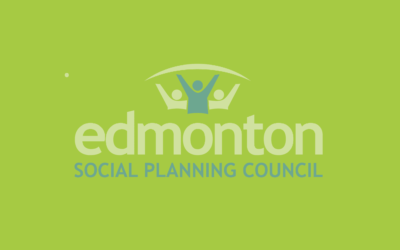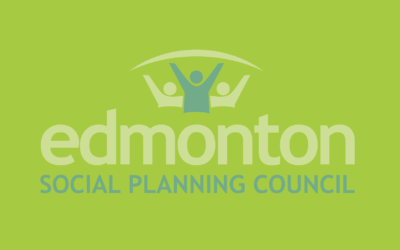Blog: International Day for the Eradication of Poverty – Dignity for All in Practice

Poverty denies people their fundamental rights and takes away dignity. Poverty is a local and international issue that can be eradicated through meaningful policy reforms.
By Amanda Labonte
October 17, 2022, is the 30th anniversary of the International Day for the Eradication of Poverty and this year the theme is Dignity for all in Practice.
Poverty is exclusionary – it denies people their fundamental human rights and takes away their dignity. Poverty is not a choice, but a result of broader oppressive societal factors that are part of an economic system that ensures there are people at the top who ‘have’ and people at the bottom who ‘have not.’ These factors are influenced and maintained by policymakers, who while promising to eradicate poverty are slow to implement impactful and targeted policies that would end poverty.
The State of Poverty Internationally
Poverty continues to be an issue across the globe, and it is estimated that the COVID-19 pandemic pushed 143 – 163 million people below the poverty line in 2021. (1) Extreme poverty rates have risen, particularly in South Asia and Sub-Saharan Africa. (1)
The State of Poverty in Canada
In Canada the 2020 Building Understanding: The First Report of the National Advisory Council on Poverty defined poverty broadly, stating that “poverty is the condition of a person who is deprived of the resources, means, choices, and power necessary to acquire and maintain a basic level of living standards and to facilitate integration and participation in society.” This definition reflects what individuals need to live with dignity, participate in their communities, and feel they have autonomy in their lives. (2) Reducing or eliminating poverty goes beyond having enough financial security to put food on the table or a roof over their heads. (2)
It is reported that as of 2018, 3,983,000 people lived in poverty with a rate of 11%, however, this does not represent the full picture. (2) The data is not broken down to fully represent the intersectionalities of race, ethnicity, sexual orientation, and gender identity, nor how this looks for various groups of people including those who are experiencing homelessness – they are not included at all. The report alludes to how various forms of societal discrimination contribute to certain marginalized groups experiencing poverty because of those discriminations. (2)
The State of Poverty in Alberta
Alberta continues to lack an official poverty reduction strategy. While there was a document published in 2013 which indicated the Alberta government would start engaging communities towards developing a strategy, none of the ideas in that paper came to fruition. (3) For example, two key goals were to reduce overall poverty within 10 years and eliminate child poverty in 5, (3) neither of these things happened, and a strategy to eradicate poverty has never been developed.
7.2% of Alberta children are still living below the poverty line as of 2019 according to the market basket measure. (4) In a wealthy province such as Alberta, having any measure of poverty, related to children or not is unacceptable. “As a society we have the means to end child poverty. Allowing it to persist over decades is a choice. It’s a choice by decision makers who have not prioritized the eradication of child poverty.” (5)
The State of Poverty in Edmonton
The ramifications of poverty are broad and complex. Poverty intersects with, is influenced by, and influences social determinants of health. In Edmonton, the largest decline in the poverty rate was seen between 2000 and 2006 when the rate fell to 12.6% and has since fluctuated minimally. (6)
Edmonton has a poverty reduction strategy that is being led by End Poverty Edmonton. The focus is on ‘Gamechangers’ where small actions can impact larger outcomes resulting in radical change for people experiencing poverty. (7) The listed game changers include: health service access, affordable housing, early learning, and childcare, transportation, anti-racism, and inclusive economy. (7) The engagement with these broad social factors shows that poverty is about much more than just income. Examining one of these more closely, an inclusive economy means everyone has an opportunity to engage in a meaningful way with the economy, through work or benefits. (8) How might that be implemented? Two ways these can and in some cases are being implemented are through Living Wage, or a Basic Income. Both ensure people can not only meet their basic needs such as food and housing but allow for people to engage in the community with dignity.
COVID-19 Drops in Poverty Rate
In Edmonton, 12.8 – 12.9% of the population experienced poverty between 2017-2019, in 2020 there was a significant drop to 10.8%. (9) Overall, in Canada, the rate fell from 10.3% to 6.4% however this is in large part due to the pandemic supports that were introduced to help mitigate the financial impacts of the pandemic. (10) This is significant in that this demonstrates how supports like Canada Emergency Response Benefit (CERB) can combat poverty. As these supports have been retracted, there will be many people left either on the line of poverty or below the line of poverty. In a few years time it is highly likely we will see a dramatic increase in poverty rates.
What needs to happen?
As a global, national and local society we need to come together to ensure dignity for all members. We need policy development and implementation that ensures the action towards the elimination of poverty versus just talking and writing about it.
Poverty is a policy choice and leaders are either working to end it or they are ignoring and, in many cases, perpetuating the problem. What the COVID-19 pandemic has made clear is that if there are actual government investments (i.e. CERB), it is feasible to meaningfully address and potentially eradicate poverty. Once the COVID-19 measures are rolled back or dry up, inevitably things will revert back to the previous ways of doing things, which will mean a return to higher poverty rates. Clearly, key investments meant to address an emergency situation need to become a permanent part of a government’s social response — pandemic or no pandemic. People still need shelter, food security, access to education, and more for all times. We need to get towards a “new normal” where nobody is left behind and everyone has the chance to live with dignity.
Did You Enjoy this Blog? Please provide us feedback here
Amanda Labonte is a registered social worker and is Edmonton Social Planning Council’s Project Coordinator of Research Services and Capacity Building as well as the Volunteer Coordinator.
To enjoy more of our blog posts or to learn more about Edmonton Social Planning Council please visit our website at www.edmontonsocialplanning.ca or follow us on social media @edmontonspc
References
- United Nations. (n.d.). International day for the Eradication of Poverty 2022 Theme: Dignity For All in Practice. https://www.un.org/en/observances/day-for-eradicating-poverty
- Government of Canada. (2020). Building Understanding: The First Report of the National Advisory Council on Poverty. https://www.canada.ca/en/employment-social-development/programs/poverty-reduction/national-advisory-council/reports/2020-annual.html#h2.03
- Government of Alberta. (2013). Together We Raise Tomorrow: Alberta’s Poverty Reduction Strategy. https://open.alberta.ca/dataset/11df4303-b795-4c7d-a2bf-5dc1c70fdf24/resource/28faa2ba-8242-4f10-af69-94e8be659a73/download/6881615-2013-together-we-raise-tomorrow-albertas-poverty-reduction-strategy-2013-06.pdf
- Statistics Canada. (2022). Low income statistics by age, sex and economic family type. https://www150.statcan.gc.ca/t1/tbl1/en/tv.action?pid=1110013501&pickMembers%5B0%5D=1.12&cubeTimeFrame.startYear=2019&cubeTimeFrame.endYear=2020&referencePeriods=20190101%2C20200101
- Sheloff, S., Lafortune, B., Jo, S.M. & Kruse, L. (2022). Child Poverty in Alberta: A Policy Choice Not a Necessary Reality. https://edmontonsocialplanning.ca/3d-flip-book/2022-child-poverty-report/
- Edmonton Social Planning Council. (n.d.). BB4 Proportion of Persons Living in Poverty, Edmonton CMA. https://edmontonsocialplanning.ca/social-well-being/bb-poverty/bb4-poverty/
- End Poverty Edmonton. (n.d.). What are game changers?https://www.endpovertyedmonton.ca/gamechangers
- End Poverty Edmonton. (n.d.) Inclusive economy. https://www.endpovertyedmonton.ca/livable-incomes
- Statistics Canada. (2022). After-tax low income status of tax filers and dependants based on Census Family Low Income Measure (CFLIM-AT), by family type and family type composition (Table 11-10-0018-01) [Data set]. https://doi.org/10.25318/1110001801-eng
- Government of Canada. (2022, March 23). Canada’s poverty rate decreased significantly in 2020. https://www.canada.ca/en/employment-social-development/news/2022/03/canadas-poverty-rate-decreased-significantly-in-2020-federal-emergency-and-recovery-benefits-mitigated-the-pandemics-economic-impact.html




